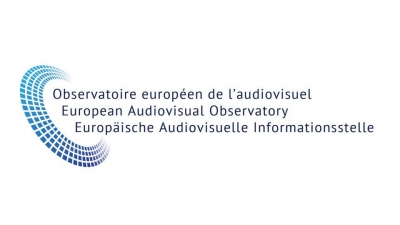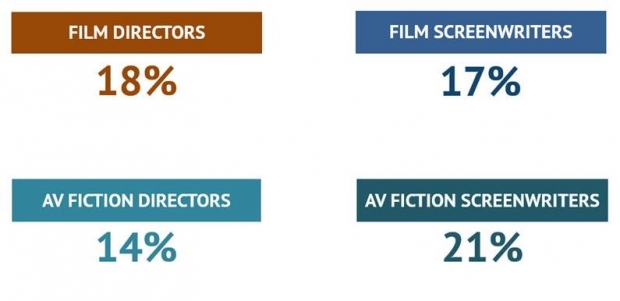New study finds women still account for a minority of directing and screenwriting positions in feature films and TV.
 The European Audiovisual Observatory published a new report on the gender of directors and screenwriters in the European film and audiovisual fiction industries. In its findings, women represent less than one film director out of four in Europe. The report provides an assessment of the gender imbalance among directors and screenwriters in Europe, looking at both feature films (including animation) and audiovisual fiction films and series (TV / VOD, not including animation).
The European Audiovisual Observatory published a new report on the gender of directors and screenwriters in the European film and audiovisual fiction industries. In its findings, women represent less than one film director out of four in Europe. The report provides an assessment of the gender imbalance among directors and screenwriters in Europe, looking at both feature films (including animation) and audiovisual fiction films and series (TV / VOD, not including animation).
The analysis provides an overview of the gender of directors and screenwriters of European film and audiovisual fiction episodes, including information on film genres and content type. In addition, it explores the gender composition of direction and screenwriting teams and identifies the share of films by female-majority teams.
For feature films, the analysis draws on data from European Audiovisual Observatory’s LUMIERE database, which collates annual admissions to theatrically released films from a variety of sources, including national film agencies. The study sample comprises European feature films produced between 2015 and 2018 and theatrically released between 2015 and 2019. The data on audiovisual fiction series were provided by Plurimedia and include TV films and fiction series of EU origin (including the UK), broadcast or made available on SVOD services or TV channels across the EU between 2015 and 2018.
Women are still the minority in directing and screenwriting film and fiction:
- Women represent 22% of all directors of European feature films active between 2015 and 2018.
- This gap is even more pronounced in audiovisual fiction, where women only account for 19% of directors. Instead, the female presence is higher in the category of screenwriters, as women represent 25% of active professionals in feature film and 34% in audiovisual fiction.
- The prevalence of female professionals is higher in documentary films than other film genres, for both film directors (28%) and screenwriters (30%).
In two out of three cases, a female screenwriter works in partnership with at least one other colleague (who is a man in 87% of the cases):
- Based on the data sample, women tend to work in teams with other people more often than men, a pattern that can be observed across all groups considered.
- Looking at feature films written by at least one female screenwriter, 67% were co-written with another professional. This compares with only 55% of films co-written for cinema by at least one male screenwriter.
- In all professional categories considered, female professionals are proportionally more likely than men to work in gender-mixed teams.
- On average, women in all groups were slightly less active than their male counterparts. For instance, 91% of female directors only directed one single film, compared for 86% for men.
- For these reasons, when considering the share of women weighted by the total number of professionals (directors or screenwriters) for each film or episode, the results are lower than the share of active female professionals in each sub-group. However, significant differences can be observed across countries and professional categories.
Only 18% of feature films were directed by female-majority teams of directors:
- Between 2015 and 2018, only 18% of European feature films sampled were directed by a female-driven team (i.e. by a majority of female professionals in the role of director). This figure is lower for episodes of fiction series (14%). Among screenwriters, the share of works written by female-driven teams is 17% for feature films and 21% for audiovisual fiction episodes.
- Documentary is the film genre with the highest share of titles by female-driven teams, considering both teams of directors (25%) and screenwriters (25%). In all groups, the share of works by majority-female teams of professionals has not substantially changed over the timeframe analyzed.
The report, in its entirety, is available to review here.
*In this context, “female-driven” refers to feature films or audiovisual fiction episodes by a majority (≥ 60%) of female professionals working in each role. Works by female-driven teams can be made either: by one individual female director/screenwriter; by several female directors/screenwriters; by teams of directors/screenwriters of both genders with a female presence of at least 60%.
Source: European Audiovisual Observatory











